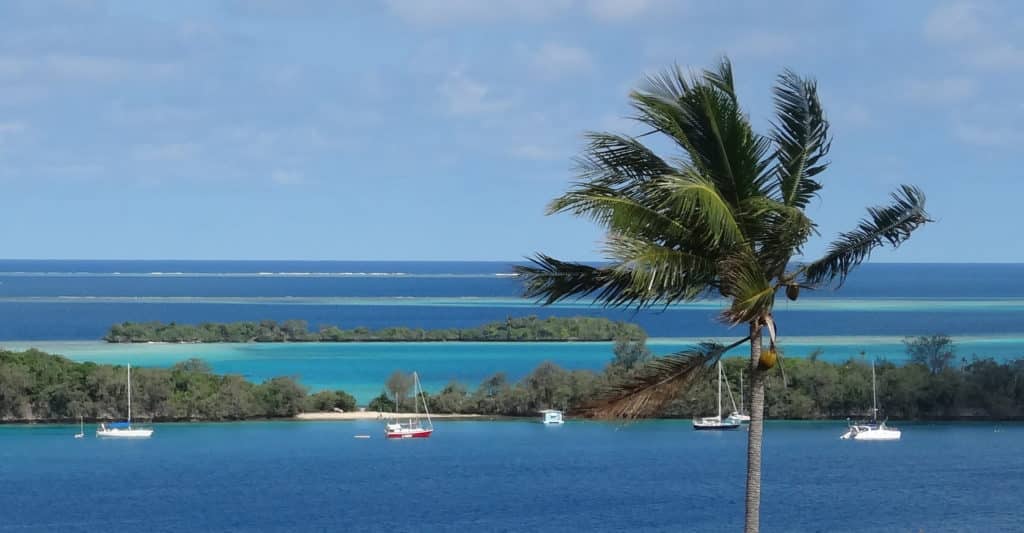
Crossing the Pacific Ocean is, for many sailors, a one-season affair. Boats cast off from the States, Mexico or Panama in early spring, and island-hop across the South Pacific on a steady pace, reaching New Zealand or Australia by late fall. This timing gets mariners to a safe harbor before the start of the Southern Hemisphere summer and the cyclone activity that comes with it. This timing also demands an unceasing march through one of the most storied and hard-to-reach cruising grounds on Earth.
There are other strategies. Some boats head north to seek cyclone-season refuge on an island above the equator, and then drop back down when the danger has past, for another season of South Pacific exploring. Still another group hunkers down in place, at one of several hurricane holes available along the 2,000-nautical-mile stretch between French Polynesia and Fiji. This latter strategy offers the added benefit of fringe-season cruising when the weather is great and the anchorages are empty. While each of these hurricane holes has its advantages and disadvantages, one of them just got a whole lot better.
Tonga’s northern Vava‘u group of islands appears to have been designed strictly to offer protection to cruising boats. Getting to Neiafu’s natural harbor from the sea is like driving through a maze of tree-covered islands a few hundred feet tall. Sailors have been taking advantage of this geography since Capt. James Cook landed here in the late 18th century. But things have changed of late, and Capt. Cook didn’t have the cyclone protection that’s available today to cruisers in Tonga. Late in the 2015 cruising season, 35-year-old shipwrights Joe Caesar and Alan Morey opened a haul-out facility in Neiafu called the Boatyard Vava‘u (boatyardvavau.com). They had 14 cruising boats hauled for their inaugural season in custom cyclone cradles, fully cross-tied and braced, and then tied down to 1-ton concrete blocks buried in the ground. The monthly cost for a 40-foot monohull is $1,120 TOP, or about $500 USD. Current capacity is for about 50 boats, but they have plans to expand to meet demand for roughly 75 boats.
Cruisers who want to keep their boats in the water have long-relied on hurricane-proof moorings installed by enterprising operators who rent them out. Two of these operators are former cruisers Sheri Roberts and Larry Schneider. Not far from Neiafu, in a protected bay between Ano Beach and Tapana Island, Larry and Sheri set up a mooring field 15 years ago. The couple’s home is a floating art gallery called the Ark, moored among their clients’ boats. Their eight cyclone moorings in the clear-water bay are fully booked each year by cruisers wishing to stay over for the season. “We allow up to six of these boats to be unattended, and those boats we’re responsible for.” Sheri told me. “We open them up daily — depending on the weather — and run the engine and systems once a month. We take a lot of pride in what we do.”
And there is another recent change in Vava‘u that makes Tonga a more desirable place from which to extend a Pacific crossing. For much of 2015, contractors worked to upgrade systems at the local airport so pilots can conduct instrument approaches and departures. As a result, international flights direct to Nadi, Fiji, commenced in April 2016. This means that cruisers who want to leave their boat behind and fly home for a visit will save either the expensive interisland flight or the 20-hour ferry ride to Tongatapu, the country’s southern island group.
So don’t rush your own Pacific crossing; there’s much too much to explore in just a single season. Consider Tonga as a place to stop for a while.








